
Roots
In the vibrant expanse of ancient African civilizations, where the rhythm of life beat in concert with ancestral knowledge and the land’s bounty, hair was never merely a covering for the head. It lived. It communicated.
Each strand, each coil, each deliberately placed adornment held a profound lexicon, speaking volumes about an individual’s journey and their community’s collective spirit. Our exploration begins here, at the source, acknowledging that textured hair, in its myriad forms, was a central character in these compelling narratives of identity, tradition, and shared being.

Hair Anatomy and Its Ancestral Resonance
The very architecture of textured hair, with its unique helical structure, presented a canvas unlike any other. Early Africans, observing this natural design, intuitively understood its capabilities. They did not simply style hair; they collaborated with its inherent properties, allowing the hair’s natural inclination to coil, crimp, and curve to become a foundational element in their artistic expressions. The distinction between various hair types was not a system of hierarchy, but a recognition of diversity within a shared human experience, a spectrum of forms that each held unique styling possibilities.
Consider the science that underpins this artistry. The elliptical cross-section of a textured hair strand encourages its curl, creating strength and resilience through its coiled formation. This biological reality informed ancestral practices, guiding the choice of tools, the application of natural ingredients, and the very techniques employed.
For instance, the elasticity inherent in tightly coiled hair made it amenable to intricate braiding patterns that would simply unravel on other hair types. This understanding, though perhaps not articulated in modern scientific terms, was a living, passed-down wisdom, a testament to empirical observation over centuries.
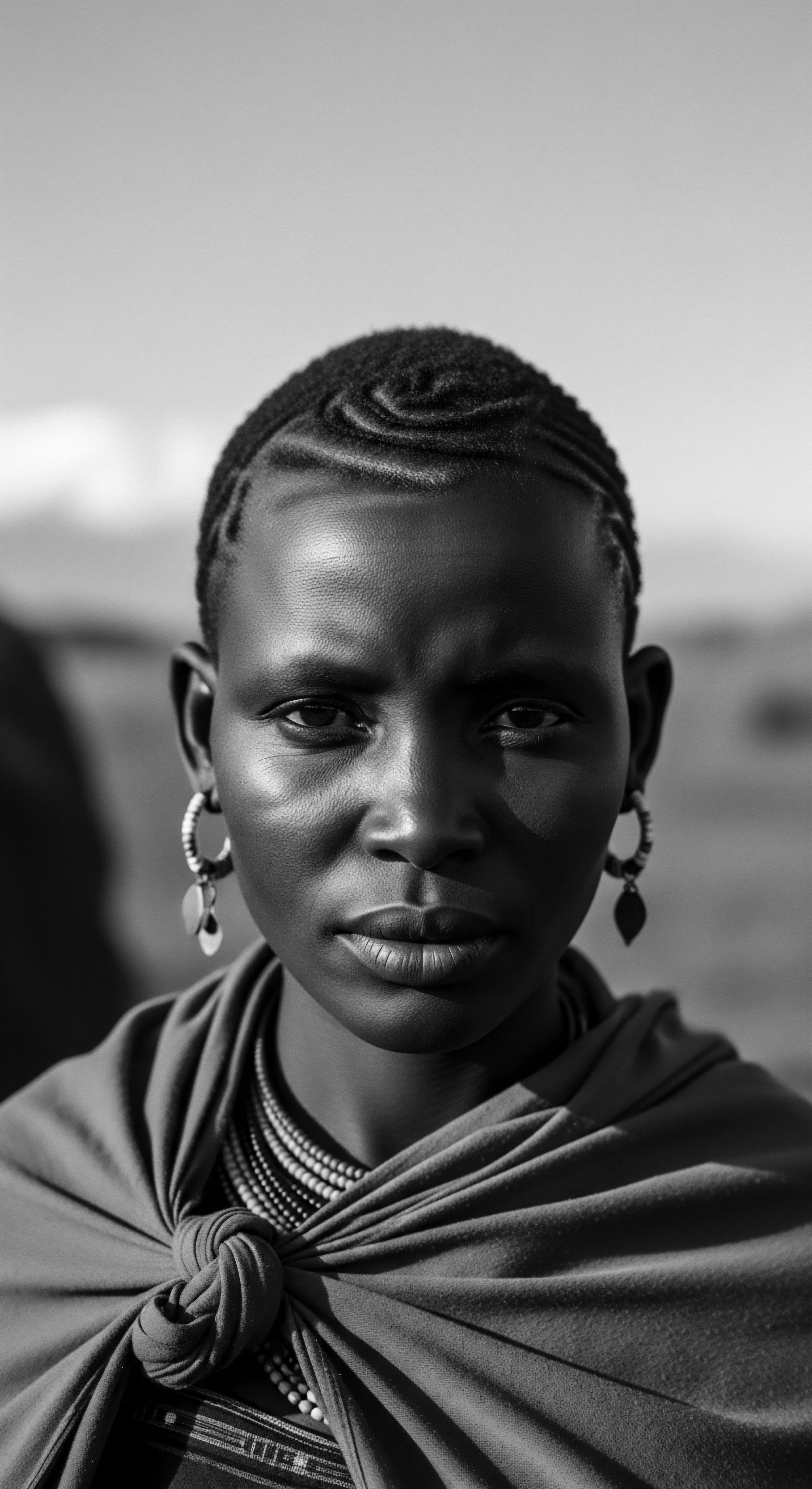
The Living Language of Hair
Before the imposition of external beauty standards, hair was a direct mirror to one’s place within the societal structure and one’s personal story. It conveyed messages without a single spoken word. A particular style could announce eligibility for marriage, signal widowhood, denote a mother’s new status, or proclaim one’s leadership role.
It could declare one’s lineage or membership in a specific age group. Hair, in essence, was a living document, constantly updated and read by all members of the community.
Ancient African hairstyles served as a visible, non-verbal language, openly communicating status, lineage, and spiritual connection within communities.
The lexicon of textured hair included not only the style itself but also the adornments. Beads, cowrie shells, precious metals, and natural dyes added layers of meaning, often indicating wealth, spiritual beliefs, or ceremonial readiness. This rich symbolic system was a testament to the sophistication of these societies, where every detail held purpose.
As an example, the ancient Egyptians, both men and women of the elite, often wore elaborate wigs. These were sometimes braided and decorated with gold or other precious materials, a visible sign of wealth and religious devotion.
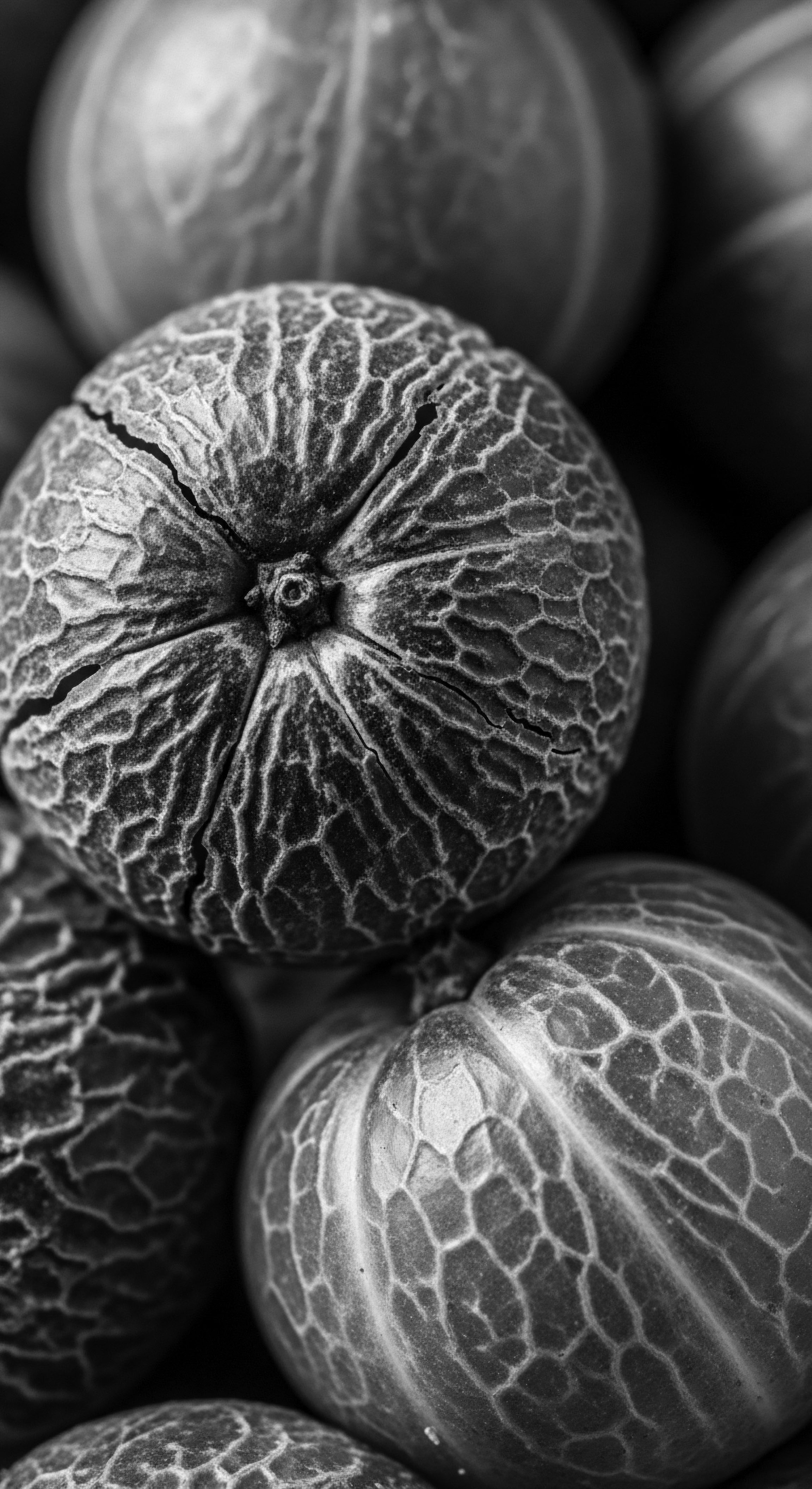
Traditional Classifications and Their Purpose
While contemporary systems categorize hair by curl pattern (e.g. 4C, 3B), ancient African communities developed their own nuanced ways of understanding hair. These were rooted in observation of its texture, behavior, and cultural significance rather than purely numerical scales. These traditional understandings guided care and styling, ensuring practices honored the hair’s inherent nature.
For instance, some practices might have differentiated between hair suitable for fine cornrows and hair better suited for larger twists, based on density and curl resilience. This was a practical, community-driven classification, not a scientific one, but it was just as effective for its context.
The historical record reveals how deeply hair practices were tied to daily life and cultural identity. The Yoruba people, for example, used hairstyles to represent community roles and spiritual beliefs. Braids could indicate marital status, fertility, or rank. Young women wore elaborate braids for initiation ceremonies, marking their transition to adulthood.
The tools used for styling were often simple yet highly effective, crafted from natural materials like wood, bone, or horn. These implements were not just functional; they were often objects of beauty themselves, passed down through generations, embodying a connection to ancestral hands that had shaped countless styles before. The very act of styling became a communal activity, a time for sharing stories, wisdom, and strengthening social bonds.
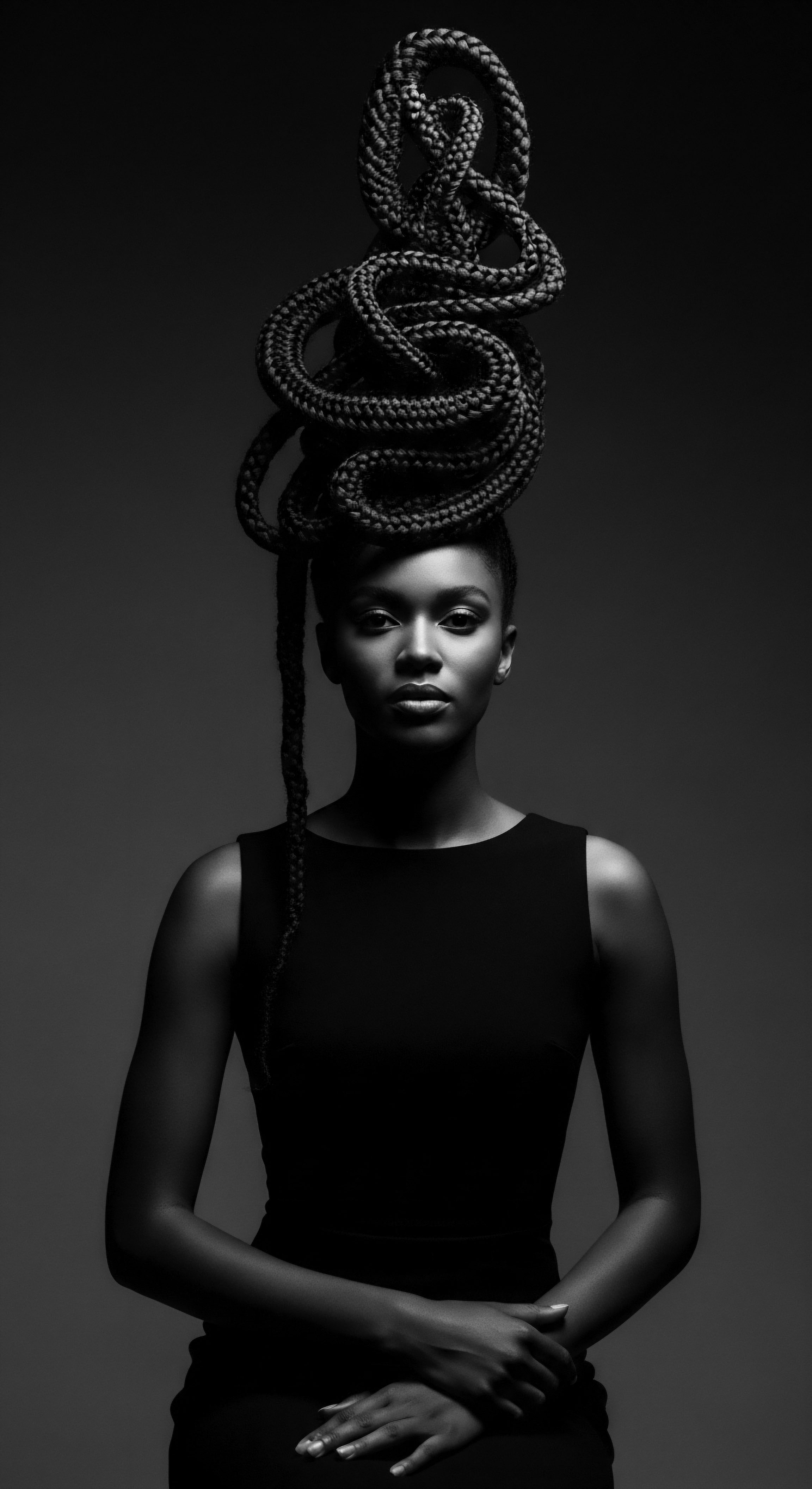
Ritual
The creation of ancient African hairstyles was far more than a mere aesthetic pursuit; it was a deeply embedded ritual, a communal act steeped in ancestral wisdom and careful application. These practices, passed down through generations, transformed the very act of hair dressing into a profound expression of communal values, personal identity, and a spiritual connection to the world. It was a tangible manifestation of the “tender thread” that binds individuals to their heritage, a dance between human hands and the natural inclinations of textured hair.

The Protective Art of Styling
Many traditional African hairstyles were inherently protective, designed to safeguard textured hair from environmental elements and mechanical damage. These styles, often requiring hours or even days to complete, allowed hair to rest, minimizing manipulation and promoting growth. They were not simply about adornment; they were about preservation, a practical wisdom woven into cultural practice. The enduring appeal of styles like braids, twists, and locs in the contemporary Black diaspora speaks to this deep-rooted knowledge of hair health, a heritage that continues to serve us today.
Consider the history of cornrows, a style dating back thousands of years in African culture, with origins in 3500 BC. These intricate patterns were more than just visual statements; they were a form of non-verbal communication, revealing details about a person’s tribe, age, social status, and marital standing. In West Africa, for example, the number and direction of cornrows could signify lineage or status. The very act of creating these styles often became a social event, a gathering where stories were shared, wisdom imparted, and communal bonds reinforced.
The Bantu knots, for instance, a style recognized across the continent and now globally, can be traced back to the Bantu-speaking communities in Southern West Africa during the 2nd millennium BCE. These coiled knots served as a protective measure, preserving hair’s moisture and structure, while simultaneously holding significant cultural weight.
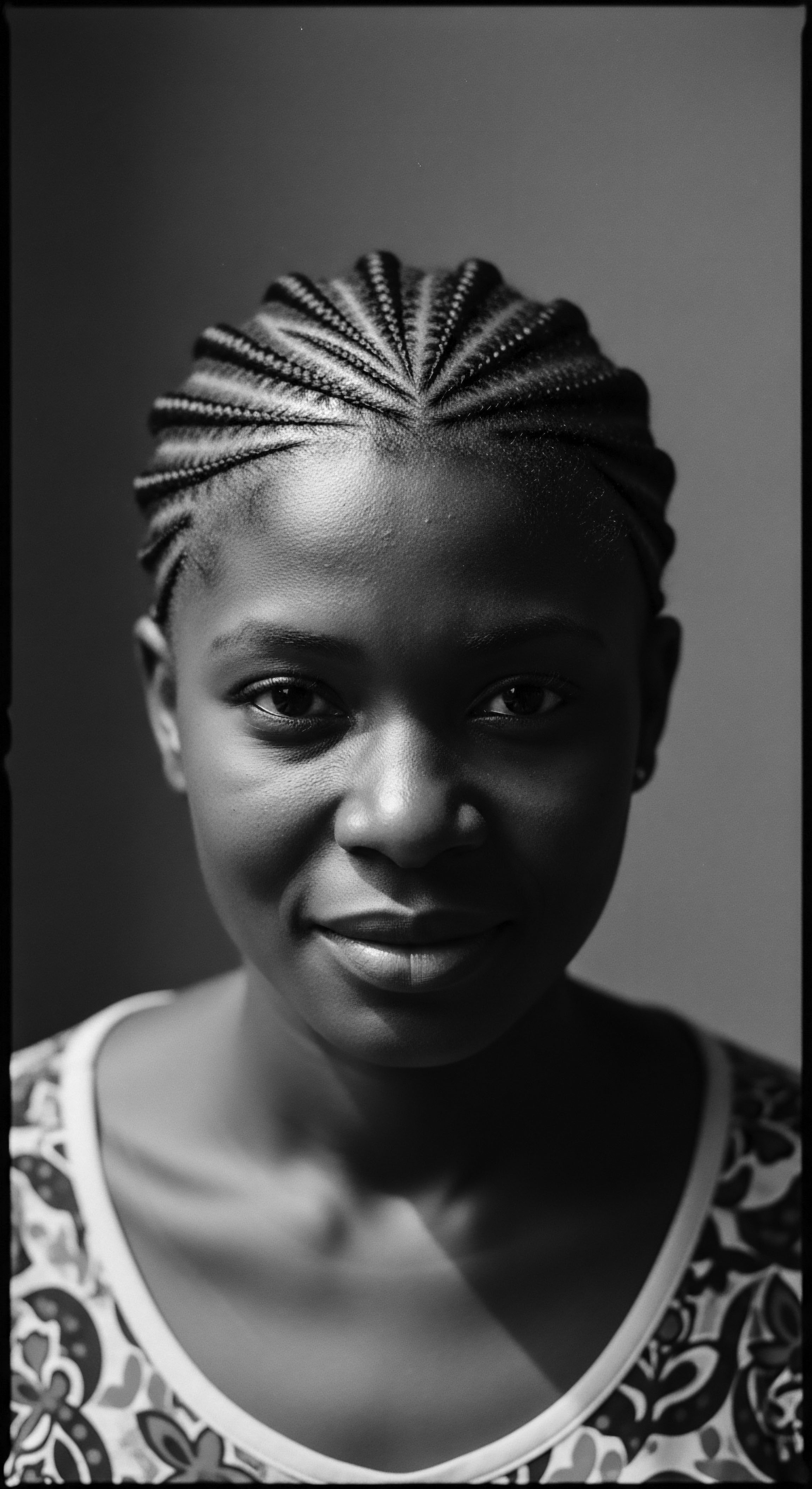
Tools of the Ancestors, Wisdom for Today
The tools employed in ancient African hair styling were extensions of the hands, crafted with purpose and deep understanding of textured hair. While modern salons offer a myriad of tools, the traditional implements were often simpler, yet highly effective. Combs, made from wood or bone, were designed to navigate coils without causing breakage. Adornments were drawn from nature’s bounty—cowrie shells, beads, feathers, and plant fibers—each adding symbolic layers to the finished style.
These tools, along with the techniques they enabled, were often passed down through family lines, especially among women. The knowledge of how to part hair, how to tension a braid, and how to incorporate extensions was a valuable inheritance, a living library of skill. The tradition of communal hair styling sessions, where this knowledge was shared, allowed for practical learning alongside social connection.
| Ancient Practice Cornrows as social maps |
| Contemporary Connection and Heritage Link Continues as a sign of heritage, personal style, and protective care in the diaspora. |
| Ancient Practice Bantu Knots for protection and symbolism |
| Contemporary Connection and Heritage Link Revered as a foundational protective style, often worn as a stylistic choice or as a prep for other natural styles. |
| Ancient Practice Ochre and Fat application (Himba, Zulu) |
| Contemporary Connection and Heritage Link Echoes in modern deep conditioning and sealing practices, honoring ancestral wisdom of natural emollients. |
| Ancient Practice These historical practices provide a enduring foundation for understanding and valuing textured hair care and identity in the present day. |
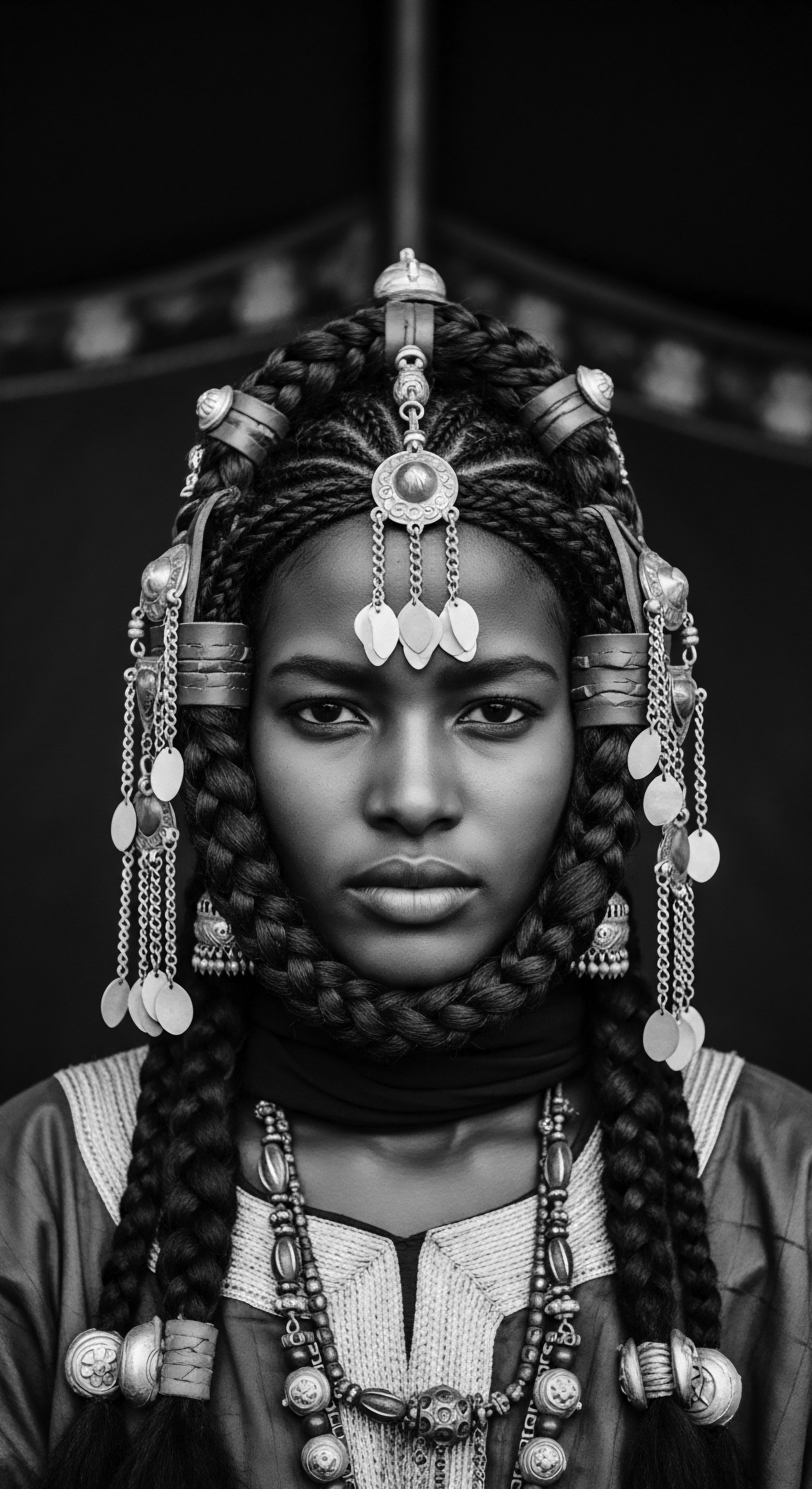
How Did These Styles Speak to Marital Status or Spiritual Devotion?
Hairstyles served as clear indicators of a person’s life stage and spiritual commitments. For instance, among the Zulu, the “Isicholo” hat, which evolved from an elaborate coiled hairstyle, was a powerful symbol of a woman’s married status and respectability. This tradition, initially involving the mother sewing her daughter’s hair into this specific design, highlighted the significance of marriage within the community and the woman’s new role.
Similarly, within Igbo culture, specific hairstyles communicated age, marital status, social class, and even mood. For example, younger girls might wear certain styles to signify youthfulness, while widows would shave their heads as a sign of mourning. The Yoruba people held hair as sacred, believing it to be a medium for spiritual energy connecting individuals to ancestors and deities. Braiding the hair could serve as a way to send messages to the gods.
- Irun Kiko (Yoruba) ❉ A threaded style, it held meaning related to femininity, marriage, and coming-of-age ceremonies. It also had practical uses, protecting hair and encouraging length retention.
- Isi Owu and Ojongo (Igbo) ❉ Styles that acted as clear markers of identity, status, and age. Ojongo, sometimes called the crested hairstyle, was adorned with beads, feathers, and shells.
- Shuku (Yoruba) ❉ Characterized by braids forming a raised, basket-like shape atop the head, symbolizing sophistication and elegance, often worn by brides and young women.
The act of styling was also, in many contexts, a sacred one. The Yoruba, for example, believed that caring for the physical head (“orí òde”) was as important as caring for the spiritual head (“orí inú”). This made the hairstylist (“onídìrí”) a highly respected figure.
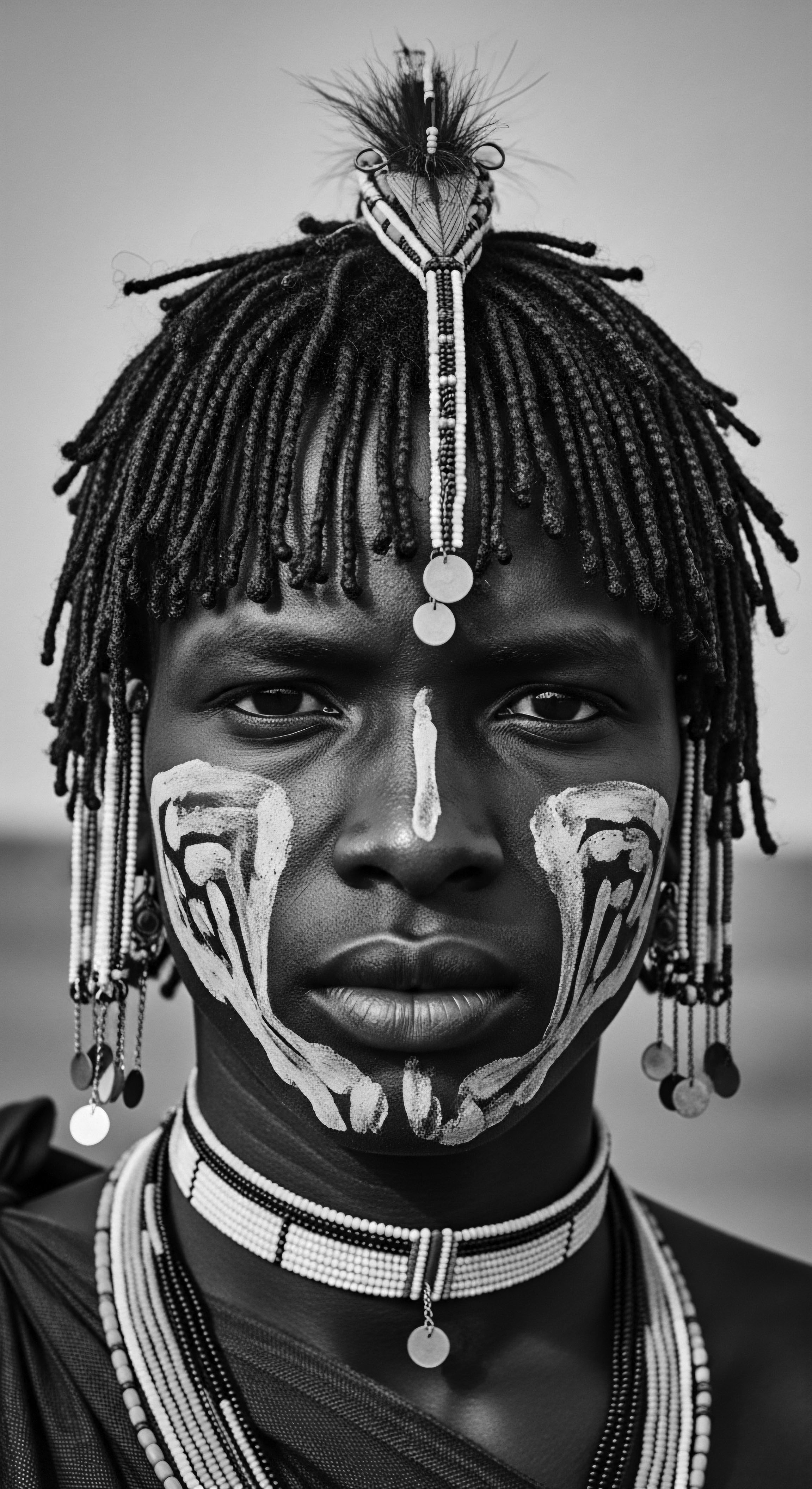
Relay
The journey of textured hair through ancient African heritage is a saga of resilience and profound adaptation, a living archive transmitted across generations and continents. Hairstyles, far beyond mere aesthetics, became enduring cultural markers, a language of resistance, and a testament to the unbound helix of identity in the face of adversity. This deep lineage showcases how ancestral practices continue to inform and shape contemporary Black and mixed-race experiences.
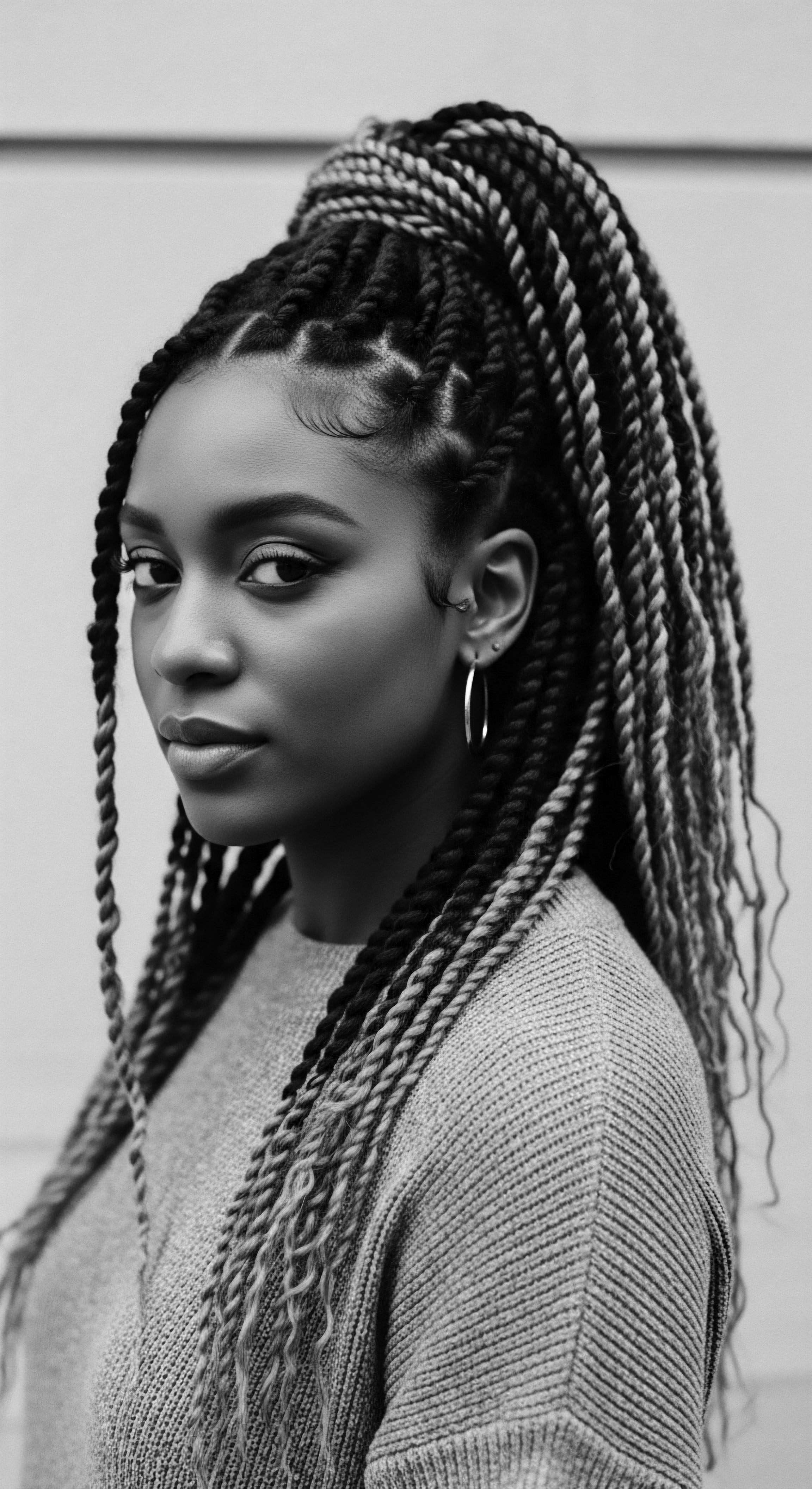
Hair as an Echo of Ancestry and Spirit
In many ancient African societies, hair was considered the most elevated part of the body, a conduit for spiritual energy, and a direct link to the divine and ancestral realms. This belief meant that hair care and styling were imbued with spiritual weight, becoming rituals performed with reverence and intention. The Maasai people of East Africa, for example, held specific beliefs connecting hair to spiritual energy, with men often shaving their heads while women adorned their hair with beads and ochre to signify beauty and status.
This spiritual connection lent deep authority to traditional hair practices. The act of braiding, often a communal activity, strengthened social bonds and served as a means of passing down cultural knowledge. It was a space for intergenerational exchange, where history and wisdom were shared through the gentle rhythm of hands at work. This collective memory, held within the very fibres of traditional styles, became a bulwark against attempts to erase African heritage during periods of enslavement and colonization.
The meticulousness of some ancient styling methods, such as the Lipombo practiced by the Mangbetu tribe of northeastern Congo, involved skull elongation from infancy to create a distinctive head shape, which was then accentuated by elaborate hairstyles. This was seen as a mark of beauty and prestige, reflecting cultural values and identity. While such practices may seem far removed from modern norms, they highlight the profound lengths to which identity was expressed and shaped through hair in these historical contexts.

The Enduring Legacy in a Challenged World
The transatlantic slave trade presented an unprecedented assault on African identity, including the profound significance of hair. Enslaved Africans were forcibly shaven, a brutal act intended to strip them of their heritage and personhood. Deprived of traditional tools, ingredients, and the communal spaces for hair care, they nevertheless found ways to preserve their ancestral practices. This resourcefulness led to acts of profound resistance, such as braiding rice seeds into hair for survival or using cornrows to map escape routes from plantations.
This period introduced a new layer of meaning to textured hair ❉ a symbol of survival and resistance. Despite the pressure to conform to Eurocentric beauty standards that devalued natural hair, many African descendants continued to wear traditional styles, a silent yet powerful assertion of their heritage.
For enslaved Africans, hairstyles transformed into coded messages and acts of resistance, preserving heritage against attempts at erasure.
The mid-20th century saw a resurgence of natural hairstyles with movements like the Civil Rights and Black Power movements. The Afro, for instance, became a potent symbol of Black pride and a rejection of dominant beauty norms. Figures like Angela Davis and the Black Panther Party popularized the Afro as a statement of empowerment and solidarity with African roots.
- Kushite Braids ❉ Ancient Nubian culture, particularly the Kingdom of Kush, valued tight, coiled braids and headpieces. Temple carvings and relief sculptures show figures with distinctive braided and cornrow styles, showcasing their tradition and cultural pride.
- Yoruba Head Shaping ❉ Traditional Yoruba hairstyles, like Kolésè, accentuated the hair’s natural texture, speaking to the strength and natural qualities of coiled hair. These styles served not just as fashion, but as direct reflectors of identity and connection to ancestry.
- Igbo Social Communication ❉ For Igbo women, hair communicated marital status, age, social class, and even mood. Styles like Ojongo, adorned with beads, feathers, and shells, were worn during festivals and rites of passage, holding specific social messages.
The persistence of these styles, adapted and re-imagined through centuries, speaks to the resilience of textured hair heritage. It is a testament to cultural continuity, where ancient wisdom finds new expression in modern contexts. The natural hair movement today echoes these ancestral calls, challenging prevailing beauty standards and celebrating the diverse manifestations of textured hair as a profound statement of identity and pride.
An ethnographic study by Ingrid Banks in 2000 explored the considerable impact of “hairstyle politics” on the self-identity of Black American women, revealing how deeply their heritage and confrontations with hegemonic beauty standards influenced their perceptions. This scholarly work serves as a powerful reminder of the enduring connection between hair, identity, and the ancestral narrative, validating the historical significance that ancient African practices held.

Reflection
The journey through ancient African hair heritage brings us to a profound understanding ❉ textured hair is a living, breathing archive. Each coil, every twist, holds stories whispered across millennia, passed down through the skillful hands of mothers, aunties, and revered stylists. It is a legacy inscribed not on parchment, but on the very strands that spring from our scalps, a testament to enduring identity and an unbroken chain of ancestral wisdom.
The “Soul of a Strand” ethos reveals itself in this quiet realization ❉ that the seemingly simple act of styling hair carries within it the echoes of entire civilizations. We see how identity was not merely declared, but visibly embodied; how status was not just conferred, but meticulously woven into the fabric of daily life through hair. This was a world where hair served as a vibrant communicator, a symbol of belonging, spirituality, and societal role, connecting individuals to their lineage and their wider community.
In the contemporary landscape, this heritage continues to shape our perception of textured hair. The reclamation of natural styles by Black and mixed-race communities across the globe is a continuation of this ancient conversation, a powerful affirmation that our hair is inherently beautiful, functional, and deeply tied to who we are. It is a conscious choice to honor the ingenuity of those who came before us, who saw in each strand not a challenge, but an opportunity to express selfhood and preserve cultural memory.
The scientific understanding of textured hair today, with its focus on hydration, elasticity, and structural integrity, often validates the empirical wisdom of our ancestors. The traditional oils, the gentle manipulation, the protective styling techniques—these were not merely folklore. They were sophisticated practices rooted in a deep, intuitive knowledge of hair’s biological needs. The past, in this sense, truly does inform the present, offering a compass for holistic hair wellness that is deeply aligned with our ancestral blueprint.
The enduring presence of these ancient practices reminds us that identity is not a static concept, but a dynamic, unfolding helix. It is a continuous dialogue between inherited wisdom and contemporary expression, a celebration of resilience that has allowed this vibrant heritage to survive and flourish through generations. To care for textured hair is to partake in this sacred continuum, to honor the journey of those who wore their stories with pride, and to continue writing new chapters in the living archive of our strands.

References
- Byrd, Ayana, and Lori L. Tharps. (2001). Hair Story ❉ Untangling the Roots of Black Hair in America. St. Martin’s Press.
- Jacobs-Huey, Lanita. (2006). From the Kitchen to the Salon ❉ Language and Cultural Co-Construction in the African American Beauty Shop. Oxford University Press.
- Banks, Ingrid. (2000). Hair Matters ❉ Beauty, Power, and the Politics of African American Women’s Hair. New York University Press.
- Mercer, Kobena. (1914). Black Hair/Style Politics. Bay Press.
- Patton, Tracey. (2006). African-American Hair and Beauty Culture ❉ A History. Praeger.
- Rooks, Noliwe. (1996). Hair Raising ❉ Beauty, Culture, and African American Women. Rutgers University Press.
- Wengrow, David. (2006). The Archaeology of Early Egypt ❉ Social Transformations in North-East Africa, 10,000 to 2650 BC. Cambridge University Press.
- Brunton, Guy, & Caton-Thompson, Gertrude. (1928). The Badarian Civilisation and Predynastic Remains near Badari. British School of Archaeology in Egypt.
- Smith, G. Elliot, & Wood-Jones, F. (1910). The Archaeological Survey of Nubia. Report for 1907-1908. Government Press.
- Petrie, W. M. Flinders. (1920). Prehistoric Egypt. British School of Archaeology in Egypt.
